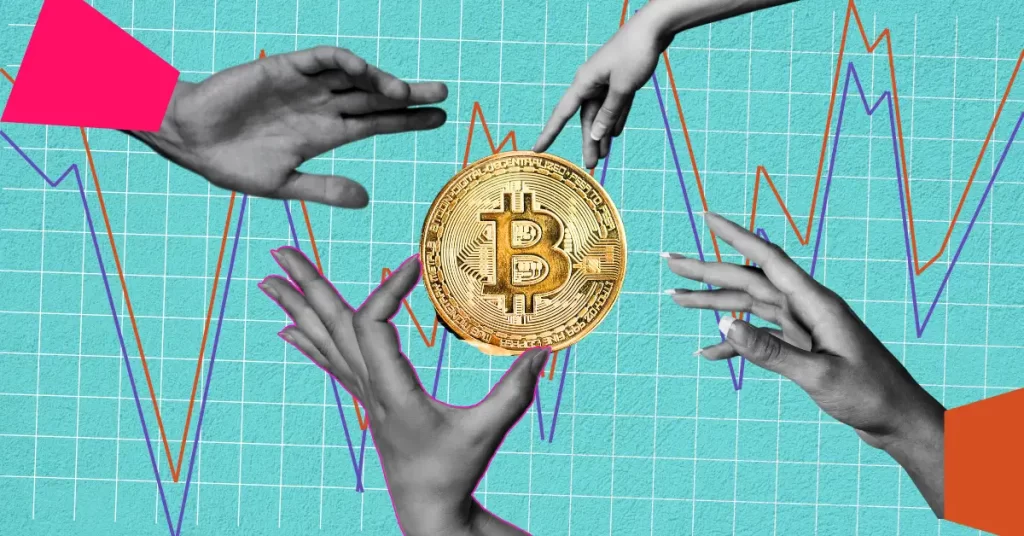ARTICLE AD BOX

The post The Truth Behind How Bitcoin Halving Impacts ETF Values appeared first on Coinpedia Fintech News
As Bitcoin gears up for its fourth halving in mid-April 2024, it is causing quite a stir. This event directly affects crypto miners so it is understandable if any conversation is happening around this, but the big talk is not just about that. People in the crypto world are more concerned about its ripple effects. Truth is, it indirectly influences all the major parts of the sector. Even the Bitcoin ETF sector is likely to feel the impact. Given that the Bitcoin ETF sector is now a big deal in the Bitcoin world, it is crucial to understand how the value of Bitcoin ETFs will be affected by the halving event. Let’s dive into everything you need to know about this important topic.
1. Bitcoin Halving: What You Should Know
Bitcoin halving is a special event in the Bitcoin system, which happens roughly every four years. The next halving, the fourth in Bitcoin’s history, is expected to occur around April 19th to 21st, 2024. During a halving, the number of new Bitcoins miners receive for processing transactions is cut in half. Currently, miners get 6.25 Bitcoin per block, but after the upcoming halving, it will reduce to 3.125. This reduction in rewards is built into the Bitcoin protocol to control its supply and ensure scarcity, making Bitcoin a deflationary asset over time.
All layers of the Bitcoin ecosystem are likely to feel the effects of the event, and Bitcoin ETFs are no exception.
2. Bitcoin ETFs Defined
Bitcoin Exchange-Traded Funds are investment funds that track the price of Bitcoin. They allow investors to gain exposure to Bitcoin without directly owning it.
There are two types of Bitcoin ETFs: Bitcoin Spot ETFs and Bitcoin Futures ETFs.
- Bitcoin Spot ETFs hold actual Bitcoin, mirroring its price movements.
- Bitcoin Futures ETFs, on the other hand, invest in Bitcoin futures contracts, which are agreements to buy or sell Bitcoin at a predetermined price in the future.
Both types enable investors to trade Bitcoin on traditional stock exchanges, providing easier access and liquidity while mitigating some of the risks associated with owning Bitcoin directly.
3. How Does Bitcoin Halving Impact Bitcoin ETFs: The Basics
The nature and extent of the impact of Bitcoin Halving can differ based on their underlying assets and market mechanisms.
For Spot ETFs, which directly hold Bitcoin, halving reduces the rate of new Bitcoin creation, potentially increasing scarcity and driving up Bitcoin’s price. This can positively impact spot ETFs by boosting their underlying asset’s value potentially leading to higher returns for investors.
On the other hand, Bitcoin futures ETFs invest in Bitcoin futures contracts rather than holding actual Bitcoin. Halving may still affect futures ETFs indirectly by influencing market sentiment and price trends. However, the impact may be less direct and immediate compared to spot ETFs.
Given that Bitcoin Spot ETFs are likely to be more affected by the event than Bitcoin futures ETFs in the short run, it is important to conduct a technical analysis of the top five Bitcoin spot ETFs to gauge their present status.
4. Bitcoin Spot ETFs Technical Analysis
Grayscale (GBTC), BlackRock (IBIT), Fidelity (FBTC), Ark/21 Shares (ARKB), and Bitwise (BITB) are the top five Bitcoin Spot ETFs based on Asset Under Management.
| Bitcoin Spot ETFs | Price | 20-Day MA | MACD 15 Period | Williams % Range 20 Days | RSI 20 Days | Ultimate Oscillator |
| GBTC | $56.38 | $60.38 | -4.74 | 55.56 | 49 | 49 |
| IBIT | $36.08 | $38.64 | -3.04 | 88.43 | 49 | 49 |
| FBTC | $55.36 | $59.29 | -4.66 | 88.30 | 49 | 49 |
| ARKB | $63.31 | $67.80 | -5.33 | 87.92 | 49 | 49 |
| BITB | $34.51 | $36.97 | -2.92 | 88.43 | 49 | 49 |
Analysing the top five Bitcoin Spot ETFs using indicators like 20-Day MA, MACD 15 Period, Williams % Range 20 Days, RSI 20 Days, and Ultimate Oscillator reveals several interesting insights.
Grayscale’s GBTC shows a current price of $56.38, below its 20-day moving average of $60.38, with a negative MACD of -4.74. The Williams % Range (20-days) sits at 55.66, while the Relative Strength Index and Ultimate Oscillator both stand at 49.
BlackRock’s IBIT is priced at $36.08, below its 20-day MA of $38.64, with a MACD of -3.04. The Williams % Range is notably higher at 88.43, while the RSI and Ultimate Oscillator both remain at 49.
Fidelity’s FBTC shows similar patterns, priced at $55.36, under its 20-day MA of $59.29, with a MACD of -4.66. The Williams % Range sits at 88.30, while RSI and Ultimate Oscillator both stand at 49.
ARKB from ARK/21 Shares is priced at $63.31, below its 20-day MA of $67.80, with a negative MACD of -5.33. The Williams % Range is at 87.92, with the RSI and Ultimate Oscillator both at 49.
Finally, Bitwise’s BITB is priced at $34.51, under its 20-day MA of $36.97, with a MACD of -2.92. The Williams % Range stands at 88.43. The RSI, and Ultimate Oscillator both remain at 49.
Precisely, all the five top ETFs are currently trading below their 20-day MAs, indicating short-term bearish trends. However, the Williams % Range suggest some variations in oversold conditions, while the MACD indicates negative momentum.
4.1. Post-Bitcoin Halving Technical Status Prediction for Top Bitcoin Spot ETFs
After the Bitcoin halving event, the present technical status of the top five Bitcoin Spot ETFs may undergo shifts. The reduction in Bitcoin supply could potentially alter price dynamics, affecting their positions relative to the 20-day moving averages. Additionally, changes in market sentiment post-halving may impact oversold conditions indicated by the Williams % Range and the negative momentum signalled by the MACD.
Endnote
As Bitcoin approaches its fourth halving in mid-April 2024, the impact on Bitcoin ETFs is a topic of considerable interest. Halving events, which occur roughly every four years, cut the rewards for Bitcoin miners in half, affecting the crypcocurreny’s supply and scarcity. This, in turn, can influence the value of Bitcoin ETFs, which track the price of Bitcoin through various mechanisms. Spot ETFs, directly holding Bitcoin, may see price boosts due to increased scarcity, while futures ETFs could feel indirect effects through market sentiment changes. Technical analysis of the top five Bitcoin Spot ETFs reveals current trends and suggests potential shifts post-halving.
.png)
 9 months ago
4
9 months ago
4








 English (US)
English (US)